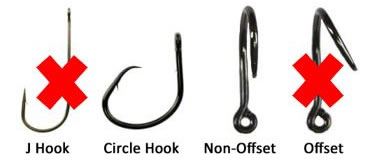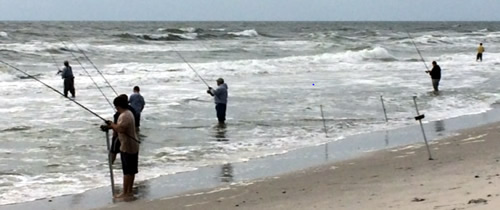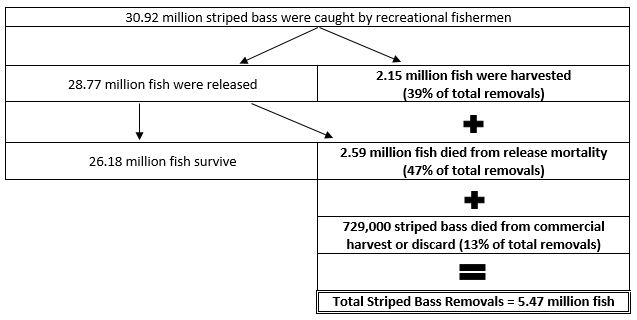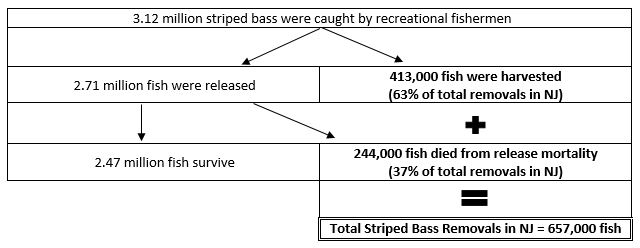
 Official Site of The State of New Jersey
Official Site of The State of New JerseyUpdated December 20, 2021In accordance with the Atlantic States Marine Fisheries Commission (ASMFC) interstate fishery management plan (FMP) for striped bass, NJ adopted regulation that requires anglers to use non-offset (inline) circle hooks when fishing for striped bass with bait in all waters. Bait is defined as any marine or aquatic organism live or dead, whole or parts thereof. This shall not apply to any artificial lure with bait attached. Striped bass caught on any unapproved method of take must be returned to the water immediately without unnecessary injury.
Using non-offset (inline) circle hooks significantly increases the survival of released striped bass.

What is a circle hook?
A ‘circle hook’ is defined as a non-offset (inline) hook where the point is curved perpendicularly back towards the shank. The term ‘non-offset or inline’ means the point and barb are in the same plane as the shank.
NOTE: Not all circle hooks are manufactured the same. You must use non-offset or inline circle hooks. When the hook is laying on a flat surface, the entire hook and barb should lay flat.

Why are circle hooks required?
Circle hooks reduce the number of fish that die due to stress or injuries from being caught and released, which is known as discard or release mortality.
Specifically, circle hooks are designed to reduce occurrences of “deep/gut hooking.” Studies have shown that gut hooking is a major cause of release mortality. Requiring the use of circle hooks when fishing with bait is the first step in reducing release mortality in the striped bass fishery.
When am I required to use circle hooks?
Circle hooks are required when fishing for striped bass with bait, which is defined as any marine or aquatic organism live or dead, whole or parts thereof. This shall not apply to any artificial lure with bait attached.
How do circle hooks increase survival of released striped bass?
Using circle hooks reduce occurrences of gut-hooking which can cause injuries to internal organs of the fish. If a striped bass swallows the bait, the circle hook is designed to slide out from its throat and catch on the corner of its jaw. When a fish is hooked in the corner of its jaw, this also leads to shorter de-hooking times and less overall stress on the fish.
Tips for using circle hooks
When a fish takes your bait, do not sweep the rod upward to set the hook. The circle hook sets itself as the fish tries to swim away. Simply let the line come tight and fight the fish. Circle hooks are effective with both dead and live baits.
What are some other tips to make sure a released fish will survive? Catch and Release Tips For Striped Bass On the Water Media
Circle Hooks for Striped Bass (pdf, 2.2mb)
Help Striped Bass Survive Catch and Release (pdf, 570kb)

Please read below for more information on release mortality and the striped bass fishery:
If you can’t keep it, save it! A primary source of striped bass mortality comes from catch and release fishing.
Roughly 90% of all striped bass caught are released due to either angler preference or regulation (e.g. fish must be released due to undersize, oversize, or bag limits). Catch & Release fishing is not 100% harmless. It is estimated that 9% of striped bass released die as a result of release mortality.
This means nearly 50% of total striped bass removals are from fish that die as a result of being caught and released (release mortality).
Along the US East Coast in 2019, it is estimated that:


In New Jersey in 2019, it is estimated that:
